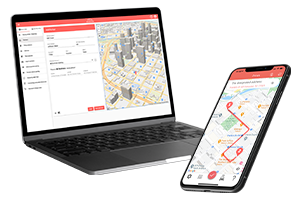April 22, 2021
Under President Joe Biden’s new proposed tax plan tax rates for individuals whose income is $400,000 and higher would increase while corporations would also be subject to a new minimum tax on book income. The Social Security tax would be extended to higher income levels and the estate tax exemption would be reduced by approximately 50%.
What does this mean for Small Businesses?
For example, a small business’s tax bill with a $1.5M gross revenue that pays out a total of $400,000 in wages to its employees and a net income of $800,000 to the owner would go up by $112,150 / tax year. The reason behind this is that the business will not receive the Qualified Business Income Deduction otherwise known as the QBID and also that under the new tax plan, the tax rates will be higher.
What about the Self-Employed?
As of Apr 12, 2021, the average annual pay for someone self-employed in the United States is $83,792 a year. The Biden plan would raise the top individual rate on ordinary income and net short-term capital gains back to 39.6% from 37%.
Will Companies be the ones losing the most?
Biden proposed to increase the corporate income tax rate from 21% to 28%. The proposal also includes a 15% minimum tax on corporations with a global book income of $100 million or more. Under Biden’s plan, corporations would pay at least $2 trillion more in taxes than they do now.
How to prepare for the changes
401(k): Employees can reallocate money when preparing their taxes. Less taxable income means less tax, and 401(k)s are a popular way to reduce tax bills. A 401(k) plan is an employer-sponsored defined-contribution pension account. Employee funding comes directly from their paycheck and may be matched by the employer.
The IRS will not tax what is diverted directly from a paycheck into a 401(k) Form. For 2020 and 2021, this money can add up to $19,500 per year per account.
Earned Income Tax Credit (EITC): Depending on the amount of an income (i.e. if it is less than $57,000 / year), marital status, and how many children a taxpayer has, they might qualify for a tax credit of up to almost $7,000 in 2020 and 2021.
Tax Deductions: Employees, Employers, and Entrepreneurs alike can benefit from tax deductions. The single biggest return on taxes out of all the Business tax deductions out there is on Business Mileage. Taxpayers can claim $1,000s on Business Mileage, and they can even claim their previous 3 years’ worth of Business Mileage Deductions in case they haven’t done so as of yet.
There are two ways to track your Business Mileage:
I. Pen and Paper: When reconstructing your log retrospectively and on paper, there are numerous fixed pieces of information and circumstances you have to pay attention to. It will make recovering your logs very difficult. You have to put the data very accurately into your mileage log. The cheaper the solution you use, the harder it will be to resolve these issues.
II. Mileage tracker app and Web Dashboard –Mileage trackers with GPS technology can only track real-time driving. You can’t use them for creating or reconstructing mileage logs retrospectively. Even if your driven mileage is based on reality, you just can’t record them that way. But with MileageWise you can make up for forgotten mileage logs, with the AI Wizard feature, and by checking and correcting 70 logical conflicts your recommended logs will be good to go and IRS-proof, meeting every expectation. After reconstructing your past mileage logs, you can continue tracking your trips with MileageWise. Just as you would do it with a mileage tracker. MileageWise can detect your trips automatically as well, but without using up your data and battery. When you arrive at a destination the app offers you a client and the purpose of the trip from an already existing database. You can always add new clients to your list, which then will be available for you automatically in the future.





